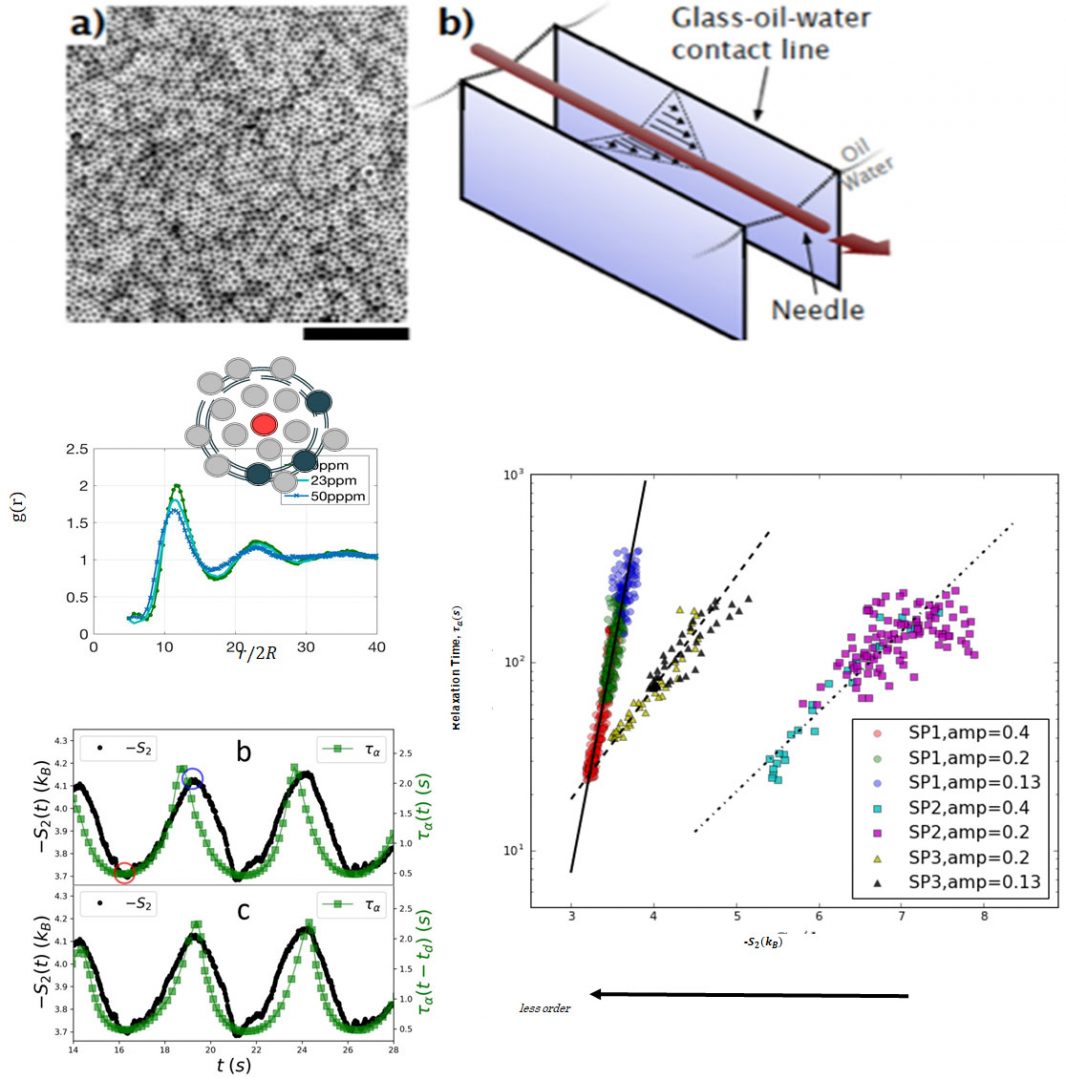
Figure a) shows the 2D colloidal sample. This suspension is made with bidisperse (5 micron, 4 micron) polystyrene spheres absorbed at a water-oil interface. The sample is sheared using an interface stress rheometer (Figure b) using a thin magnetic needle. Because the sample is 2D, we can image and track its constituents. This allows us to characterize the microstructure using the concept of excess entropy which we can calculate from the sample two-point correlation function g(r), as shown in Fig. c. We find that there is a persistent lag between the evolution of the microstructure and the sample relaxation dynamics (e.g., alpha-relaxation time). This lag hints at a causal relationship between structure and dynamics. A scaling relationship is found between structure (excess entropy) and dynamics (relaxation) that shows that faster shear-rates lead to shorter shear-induced relaxation and more disordered resultant particle rearrangements.
We aim to understand the relationship between material structure and its dynamics (i.e. relaxation) in a sheared 2D colloidal sample (a,b) [1]. A custom-made interfacial stress rheometer is used to measure the bulk flow rheology while simultaneously characterizing the fluid microstructure (i.e. particle rearrangements). We use the concept of excess entropy, a structural order parameter, to characterize the microstructure since it can be computed from the sample’s pair correlation function g(r) (c). Our results sow that the strain rate in the sample, the relaxation rate induced by plastic flow, and the sample micro-structure are measured to oscillate together but with different phases (d). Above the yielding transition, during plastic flow, we find that excess entropy scales with relaxation time (e). These results imply that bulk strain proceeds particle dynamics, which in turn proceeds evolution of structure.
[1] Galloway, K. L. et. Al., Proceedings of the National Academy of Sciences 117, 11887-11893 (2020).
